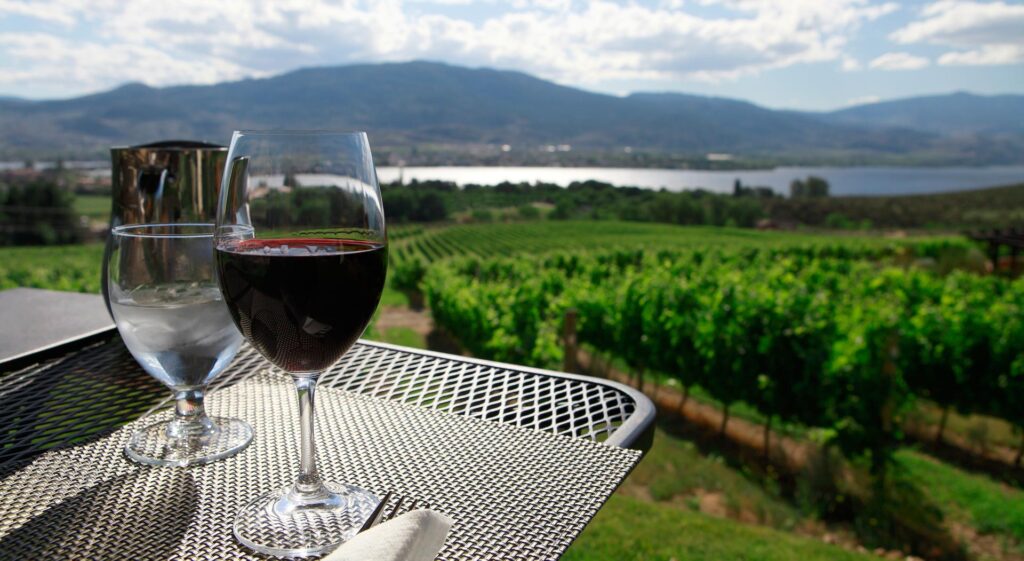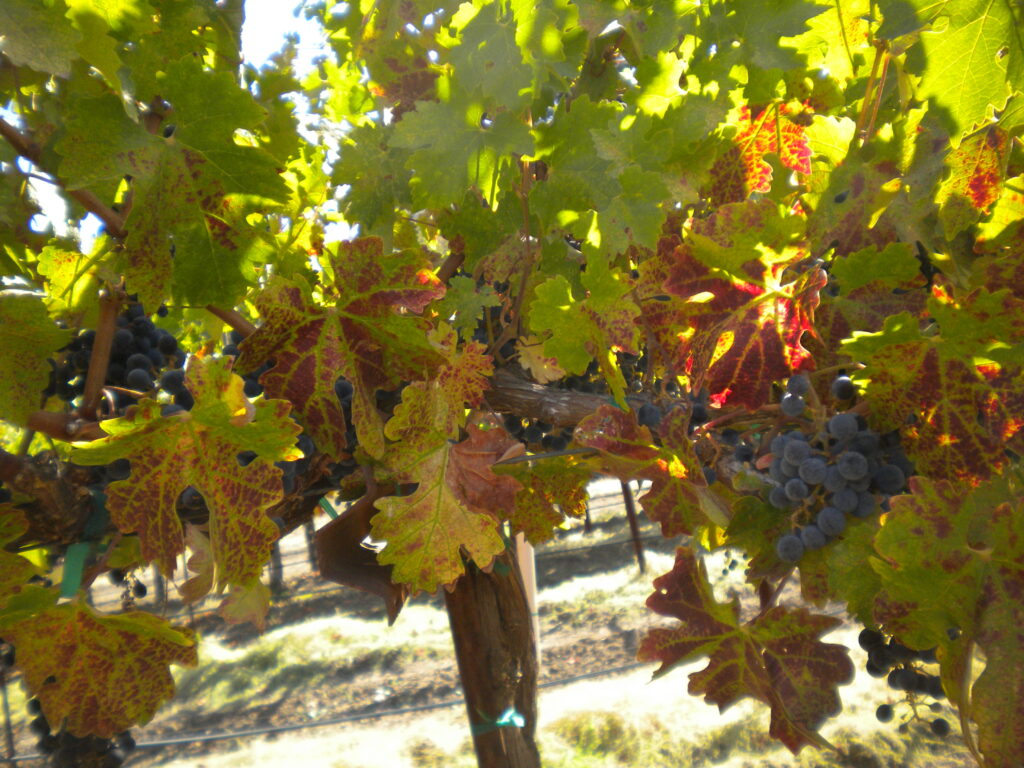
By: Nan McCreary, Sr. Staff Writer, The Grapevine Magazine
Marietta Cellars owner and winemaker Scot Bilbro remembers growing up and watching his late father, Chris, perform magic in his winery in Sonoma County. Not magic with cards or sleight of hand, but magic in transforming cardboard wine boxes into suits of armor for his boys or grilling sweet but spicy ribs and blending a fruity Zinfandel and a hearty Petite Sirah to make a perfect wine pairing for dinner.
It is that same magic — the magic of creativity and possibility — that inspires Scot, second generation winemaker at the small family winery founded by Chris Bilbro in 1978. “I’m building off what my father started,” Bilbro told The Grapevine Magazine, “and keeping a lot of his creeds and thoughts in my head and heart while also making it my own thing.”
The hallmark of the elder Bilbro’s winemaking was a certain freedom of expression, his son explained, which inspired him to create unique blends of wines atypical of Sonoma County, and all of California for that matter. “Dad was just a pleasurable, comfortable gentleman who did things that made sense to him,” Bilbro remembered. “It wasn’t that he threw the rulebook out; it was just that he hadn’t been classically trained so he did things in a way that made sense to him.” One such blend was his now-iconic Old Vine Red, a combination of Zinfandel, Syrah, Petite Syrah and Carignan that Chris Bilbro created in the 1980s. The proprietary blend put Marietta Cellars on the map and earned a stable of dedicated followers that continues to this day. What makes this wine especially distinctive is that it’s a blend not just of varieties, but of vintages. “This is a delicious wine that has become a well-known table wine for people across the country,” Bilbro said. “And yet it started as a little brainchild created by my father in a little cow barn in the hills above Dry Creek and Healdsburg.”
Bilbro, with a winery as his childhood playground and a degree in Viticulture and Enology at U.C. Davis, has been continuing his father’s legacy since Chris retired in 2012. While that legacy was well established — Chris’s success with OVR allowed Marietta to grow and purchase its own vineyards rather than continue to source fruit from friends and farmers — the younger Bilbro has access to Marietta’s 310 acres of estate-based vineyards in Alexander Valley in Sonoma and McDowell Valley and the Yorkville Highlands in Mendocino. Marietta still chooses to source a small amount of grapes from a few select growers with whom they have significant history.
Marietta’s vineyards offer an ideal climate for grape growing, with hot days for ripening and cool nights for developing acidity to balance the flavors. All grapes are farmed organically, with no synthetic herbicides, pesticides or fertilizers. “This means lots of hand labor,” Bilbro told The Grapevine Magazine, “but most of our vineyard crew has been with us for years — some for decades —and they know what needs to be done and when.” Bilbro and his crew tend the vineyards year round, and when harvest time comes, they pick the grapes with care and precision. In some years, they may harvest multiple times per block, depending on the ripeness of grapes in that block. “All of this is time-consuming,” Bilbro acknowledged, “but there are no shortcuts in the vineyard, or in the winery. Everything is determined by information we’re getting at the time rather than by going on autopilot.”
In the winery, Bilbro is now spinning wine with his own magic, just like his father before him. “My winemaking philosophy is an amalgam of my father and my education at UC Davis,” Bilbro explained. “We ferment in stainless steel tanks and age in neutral oak, because we want the grapes to preserve the properties of their terroir.” In any given harvest, the volume of a grape variety may exceed the room in the fermentation tank, so Bilbro and his team separate those grapes into individual tanks for fermentation and aging. Typically, Marietta has 80 fermentations with each harvest, sometimes with two fermentations from one block, separated by ripeness. Once the separate fermentation lots have matured in barrel, maybe as long as a year, they bring individual lots of wine together to create the final wine. “It’s much better to make sure the wine is balanced before wrapping the fermentations together rather than finding out a year later that the wine is not as balanced or complete as we like and having to resort to additives,” he said. “We want to make sure that everything that goes together deserves to go together.”
Marietta creates three series of wines: the OVR series, the Family Series and the Single Vineyard Series. The OVR series includes wines made from old vines: the Old Vine Red; a Rose made from some of the oldest Grenache and Syrah in the state; and a Riesling sourced from the state’s second oldest Riesling vines. The Family Series features wines that Bilbro names after people in his life and business: Román, a crisp, modern Zinfandel named after their cellarmaster of 34 years; Christo, his version of a Rhone-style red wine, honoring Chris Bilbro, or “Christo” as his beloved great aunt Marietta (for whom the winery is named) called him and a passionate lover of Syrah; and Armé, a Cabernet Sauvignon that balances New and Old World styles and is named for Marietta’s husband, Armé and Chris’ adventurous great uncle. The Single Vineyard Series highlights individual vineyards that deliver the purest expression of place: Angeli, a Zinfandel from Angeli Ranch in Alexander Valley, settled in 1886 and home to the Marietta Cellars winery; Game Trail, a cellar-worthy Cabernet Sauvignon from the Yorkville Highlands; and Gibson Block, a Syrah from the McDowell Valley, among the state’s oldest Syrah vines, dating back to the 1880s.
While all of these wines are quality wines in their own right, it’s the historic OVR that’s the signature wine for Marietta Cellars. The winery produces 50,000 cases of wine a year; 25,000 is OVR. While there’s no recipe for the wine, Bilbro said it’s always based on Zinfandel, with smaller components of Syrah, Petite Syrah and Carignan. “We have a massive barrel room, almost like a three-dimensional matrix with multiple varieties and multiple vintages,” he told The Grapevine Magazine. “My dad and I would pick lots that we thought might be relevant to the next release, and we’d blindly taste through them and put them in different groupings, like groupings of wines with bright fruit, structure or wines with savory components. Then we’d pick our favorites from each and blend them together to make the OVR. We’d do all of this by feel, which is part of that freedom of expression.” The OVR is released in lots, two lots per year. Marietta Cellars is now on lot #71. “The blend is always different,” Bilbro noted. “I may add a half a percentage of Cabernet to bring up in some tannins, or a bit of Barbera to bring up the acidity. A percentage doesn’t seem like much, but it can make a difference.” Whatever the blend, the style of OVR is always the same: it’s an easy drinking, medium-bodied wine that’s full of flavor.
As Marietta Cellars looks to the future, more exploration is in the cards. Bilbro and his staff are especially excited about their vineyards in McDowell Valley in Mendocino, which is renowned for Rhone varieties and home to some of the oldest Syrah and Grenache Gris in California. “We want to play with historical varieties that are less articulated out there and rearticulate them,” Bilbro said. “We also want to work these grapes into our existing blends to add some nuance.” These grapes, according to Bilbro, include Mourvedre, Roussanne, Marsanne, Grenache Blanc, Picpoul and Viognier, all grapes from the Rhone Valley that are becoming more popular among U.S. growers.
Business-wise, Marietta Cellars recently entered a partnership with VINTUS, a wines and spirits importer and marketing agent to expand its presence in the market. The company has been named a Wine & Spirits Importer of the Year five times (2015-2016-2017-2018-2019-2020) and in 2017 was named Wine Enthusiast Importer of the Year. VINTUS’ portfolio today includes Chateau Montelena, Gary Farrell Winery, Ponzi Vineyards, Champagne Bollinger, E. Guigal, Chateau Minuty, Ornellaia, Masseto, Pétrus, Château La Fleur-Pétrus, Château Margaux, Masciarelli, Tommasi, Sandrone, Le Macchiole, Quinta do Noval, Dog Point Vineyard, Errazuriz Finca Decero and others totaling more than 40 leading global estates.
Clearly, Marietta Cellars, a small family winery, has been doing big things since it was founded over 40 years ago. But the goals remain the same as they were in the beginning: to create something special and share that with the world. “Ultimately, sharing what we do with our lives — rather than our jobs — is important to us,” Bilbro told The Grapevine Magazine. “Our wine is not a commodity: It’s something we are pouring our time and hearts and souls into. When people drink our wines, we hope they think about our family and how much care and focus we put into what we do so they can actually feel what it’s like to make these wines and walk these vineyards. We want people to experience our wine, not just taste it.”
For more information on Marietta Cellars, visit www.mariettacellars.com









